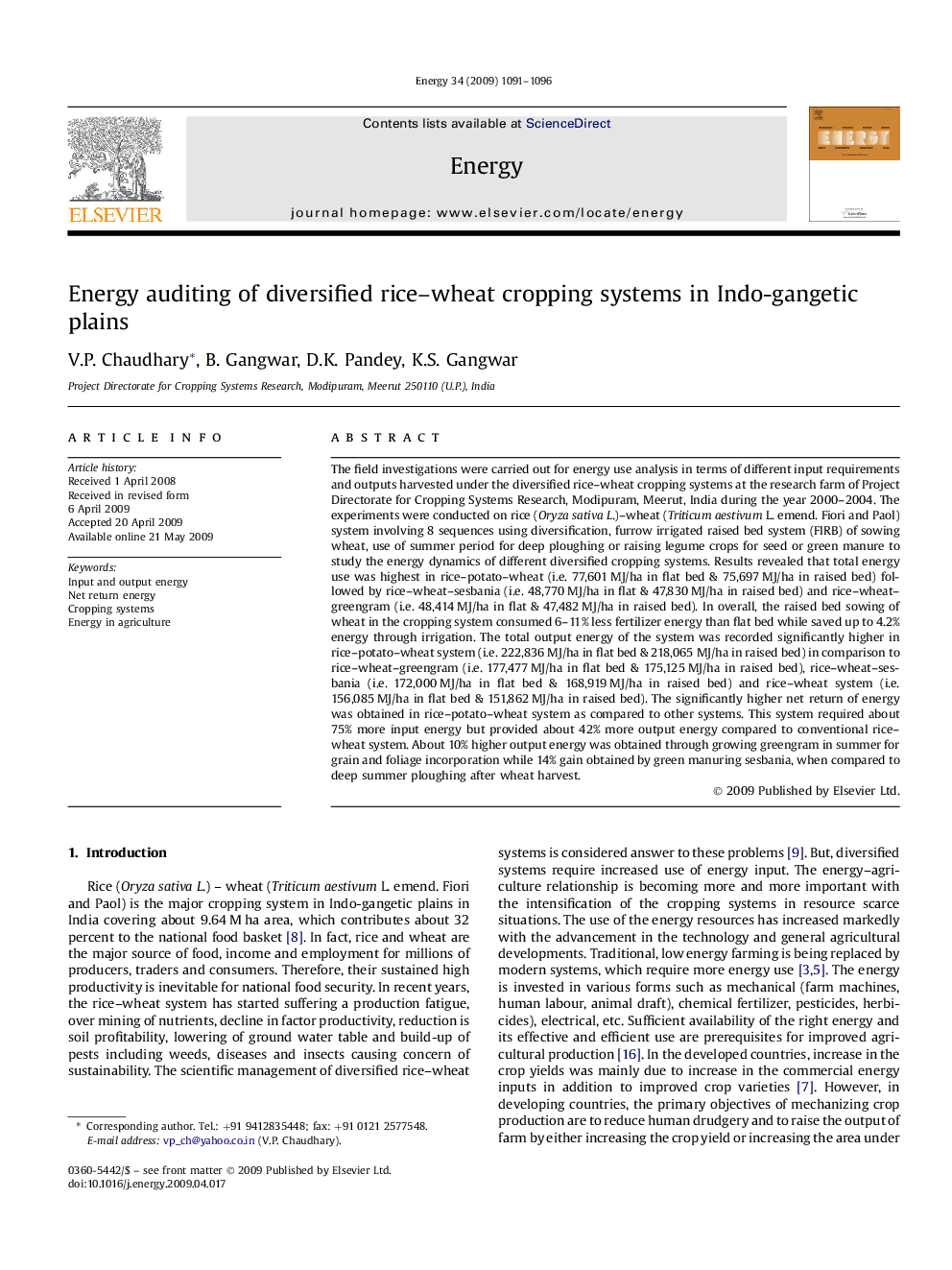| کد مقاله | کد نشریه | سال انتشار | مقاله انگلیسی | نسخه تمام متن |
|---|---|---|---|---|
| 1734418 | 1016157 | 2009 | 6 صفحه PDF | دانلود رایگان |

The field investigations were carried out for energy use analysis in terms of different input requirements and outputs harvested under the diversified rice–wheat cropping systems at the research farm of Project Directorate for Cropping Systems Research, Modipuram, Meerut, India during the year 2000–2004. The experiments were conducted on rice (Oryza sativa L.)–wheat (Triticum aestivum L. emend. Fiori and Paol) system involving 8 sequences using diversification, furrow irrigated raised bed system (FIRB) of sowing wheat, use of summer period for deep ploughing or raising legume crops for seed or green manure to study the energy dynamics of different diversified cropping systems. Results revealed that total energy use was highest in rice–potato–wheat (i.e. 77,601 MJ/ha in flat bed & 75,697 MJ/ha in raised bed) followed by rice–wheat–sesbania (i.e. 48,770 MJ/ha in flat & 47,830 MJ/ha in raised bed) and rice–wheat–greengram (i.e. 48,414 MJ/ha in flat & 47,482 MJ/ha in raised bed). In overall, the raised bed sowing of wheat in the cropping system consumed 6–11% less fertilizer energy than flat bed while saved up to 4.2% energy through irrigation. The total output energy of the system was recorded significantly higher in rice–potato–wheat system (i.e. 222,836 MJ/ha in flat bed & 218,065 MJ/ha in raised bed) in comparison to rice–wheat–greengram (i.e. 177,477 MJ/ha in flat bed & 175,125 MJ/ha in raised bed), rice–wheat–sesbania (i.e. 172,000 MJ/ha in flat bed & 168,919 MJ/ha in raised bed) and rice–wheat system (i.e. 156,085 MJ/ha in flat bed & 151,862 MJ/ha in raised bed). The significantly higher net return of energy was obtained in rice–potato–wheat system as compared to other systems. This system required about 75% more input energy but provided about 42% more output energy compared to conventional rice–wheat system. About 10% higher output energy was obtained through growing greengram in summer for grain and foliage incorporation while 14% gain obtained by green manuring sesbania, when compared to deep summer ploughing after wheat harvest.
Journal: Energy - Volume 34, Issue 9, September 2009, Pages 1091–1096